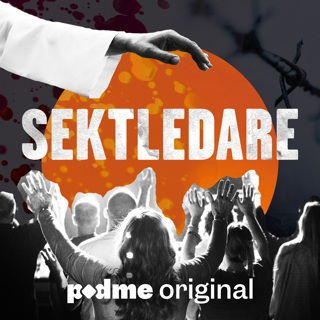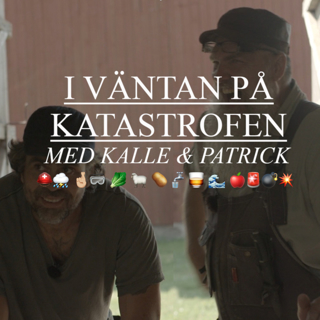
Ep. 148 Radial vs Femoral for Prostate Artery Embolization with Dr. Blake Parsons
We talk with Dr. Blake Parsons about his approach to Radial vs. Femoral access for Prostate Artery Embolization for BPH, including patient selection, device considerations, and practice pearls. --- SHOW NOTES In this episode, Dr. Blake Parsons and our host Dr. Chris Beck discuss access sites for prostate artery embolization, along with advice for visualizing pelvic anatomy, procedural tips, and post-operative care. We start by comparing radial and femoral access. Dr. Parsons prefers femoral access because it is faster, although both approaches share the same amount of bleeding risk. Radial access may offer more pushability and may be more appropriate for patients with tortuous iliac arteries. Additionally, we discuss the closure methods for each approach-- TR Band for radial access, and Angio-Seal for femoral access. Since pelvic anatomy varies from patient to patient, it can be challenging and time-consuming to identify the prostate artery. Dr. Parsons recommends using the obturator and pudendal arteries as landmarks. He also emphasizes that resources like lectures, meetings, papers, and courses can help IRs gain exposure and confidence in the pelvic anatomy. Finally, we talk about managing patient expectations about post-operative pain and dysuria relief. Dr. Parsons prescribes antibiotics, Medrol Dosepak, and Pyridium. The timeline for improvement in benign prostatic hyperplasia is different in each patient, but improvement can be tracked with the IPSS score at follow up appointments. --- RESOURCES STREAM Meeting: https://www.thestreammeeting.com/
16 Aug 202148min

Ep. 147 Passion Projects and Entrepreneurship with Dr. Sahil Mehta
We talk with Dr. Sahil Mehta, founder of MedSchoolCoach, about how a side gig as an MCAT and med school tutor scaled up into a successful business. We also talk about the importance of passion projects of all types and sizes in preventing burnout, and avoiding "analysis paralysis" when it comes to starting a new business. --- EARN CME Reflect on how this Podcast applies to your day-to-day and earn AMA PRA Category 1 CMEs: https://earnc.me/4HTCj4 --- SHOW NOTES In this episode, physician entrepreneurs Dr. Sahil Mehta and Dr. Aaron Fritts discuss how they started their passion projects and share business operations advice for budding entrepreneurs. Dr. Mehta starts the show by telling the origin story of MedSchoolCoach, an online educational platform created to help students achieve their goals of entering medicine. MedSchoolCoach offers academic and career resources for high school, college, and medical students. While Dr. Mehta was a medical student when he originally had the idea for the company, the majority of business development occurred in his IR fellowship year. The doctors talk about how passion projects can protect against burnout and actually relieve academic and financial stress from working in clinical practice. They also emphasize how they can apply business concepts to enhance their clinical practices. For example, marketing MedSchoolCoach to consumers taught Dr. Mehta how to better market IR procedures directly to patients. Scaling up a business can present obstacles, so Dr. Mehta outlines strategies for hiring the right people, conducting market research, and making effective use of social media. He highlights the fact that motivated and talented employees can always learn specific industry knowledge. To anyone who is debating whether or not to pursue a passion project, Dr. Mehta advises them to avoid over-analysis and jump into the idea because it will always be a learning experience. --- RESOURCES MedSchoolCoach: https://www.medschoolcoach.com/ Entrepreneurship in Medicine Panel: https://www.prospectivedoctor.com/entrepreneurship-in-medicine/
9 Aug 202147min

Ep. 146 Spyglass Interventions with Dr. Ravi Srinivasa and Dr. Jeff Chick
Interventional Radiologists Dr. Jeffrey Chick and Dr. Ravi Srinivasa tell us all about the latest and greatest in Spyglass Interventions, including how and where they're being used for lithotripsy, as well as upcoming training opportunities for those interested. --- SHOW NOTES In this episode, Dr. Ravi Srinivasa, Dr. Jeff Chick, and our host Dr. Michael Barraza discuss the SpyGlass Direct Visualization System and its benefits for endoscopic procedures. The doctors begin with a short introduction to previous single-use endoscopes, noting challenges like limited flexibility and incompatibility with existing hospital infrastructure. The SpyGlass overcomes these obstacles by providing on demand irrigation, four-way flexion, recording capabilities, and its own compatible ancillary devices. Dr. Srinivasa describes his use of the Spyglass in targeted biopsies and lithotripsies. Dr. Chick emphasizes that any IR can easily access and use this device, whether they are in a private, academic, solo, or hybrid practice. The minimal setup and ideal dimensions of the SpyGlass make it adaptable to many parts of the body. Finally, the doctors discuss upcoming educational content from Boston Scientific that will help IRs learn how to use the device and adapt it to their practices. --- RESOURCES Spyglass Direct Visualization System: https://www.bostonscientific.com/en-US/products/single-use-scopes/spyglass-ds-direct-visualization-system.html
2 Aug 202128min

Ep. 145 The History (and Future) of the STREAM conference with Dr. Isaacson and Dr. Bagla
We talk with STREAM meeting founders Dr. Ari Isaacson and Dr. Sandeep Bagla about its origin story, as well as what they have planned at STREAM 2021 for docs who want to learn Prostate Artery Embolization, Musculoskeletal Embolizations, and new techniques for Pain Therapy. --- SHOW NOTES In this episode, Dr. Ari Isaacson, Dr. Sandeep Bagla, and our host Dr. Michael Barraza discuss the evolution of the STREAM conference and new developments for the September 2021 meeting. Starting from 2017, the STREAM conference has attracted minimally invasive specialists seeking practical education and training. While the conference originally revolved around prostate artery embolization, it has since expanded to include topics such as genicular artery embolization, peripheral artery disease, and musculoskeletal interventions. Drs. Isaacson and Bagla highlight the wide variety of speakers, which include urologists, orthopedic surgeons, and medical malpractice lawyers. They both emphasize that this dynamic conference responds to the audience’s interests and has an overall laid-back atmosphere. This year will also be the first one to feature a case competition for students and residents. Click the link below to register for the conference and apply the BackTable promotional code! --- RESOURCES STREAM Meeting: https://www.thestreammeeting.com/ For attendings, use the code “BACKTABLE” for 50% off registration fee. For residents/fellows/students, use the code “BACKTABLETRAINEE” for 100% off registration fee.
30 Juli 202140min

Ep. 144 Direct Aspiration vs Co-Aspiration for Ischemic Stroke with Dr. Baxter and Dr. Tateshima
Dr. Sabeen Dhand talks with Dr. Blaise Baxter and Dr. Satoshi Tateshima about direct aspiration vs. co-aspiration technique when treating ischemic stroke. In this first episode of a multi-part series covering treatment of ischemic stroke they discuss radial vs. femoral approach, anatomic considerations, and tips and tricks with both techniques. --- SHOW NOTES In this episode, neurointerventional specialists Drs. Blaise Baxter, Satoshi Tateshima, and Sabeen Dhand discuss anatomical considerations and procedural techniques in direct aspiration and co-aspiration for ischemic stroke treatment. The episode starts with a discussion about radial versus femoral approaches. While femoral access remains the most common method, device innovations are making brachial and radial access more available. Dr. Baxter and Dr. Tateshima describe the use of co-aspiration in their frontline techniques. However, Dr. Tateshima notes that he prefers to use direct aspiration in posterior circulation, since the vessel size may be unknown. Dr. Baxter also emphasizes that with co-aspiration, it is important to size-match the catheter with the vessel. The choice of direct aspiration vs. co-aspiration depends largely on the location of the clot. The doctors walk through different considerations for M1, M2, and M3 strokes. Additionally, they talk about studies that compare the aspiration techniques and outcome factors such as improvements in TICI and mRS scores. Finally, they speak about the rewarding nature of stroke interventions and exciting new developments in the field. --- RESOURCES ASTER Randomized Clinical Trial: https://pubmed.ncbi.nlm.nih.gov/28763550/ SAVE vs. ADAPT for Acute Stroke: https://bmcneurol.biomedcentral.com/articles/10.1186/s12883-019-1291-9
26 Juli 202145min

Ep. 143 Better Marketing Strategies with Dianne Keen
We chat with seasoned Marketing Director Dianne Keen about the strategies that are helping doctors build sustainable practices, add service lines, and work toward patient-centered collaborative care with referring providers. Listen to learn about Dianne's "Trifecta" approach! --- SHOW NOTES In this episode, radiology marketing director Dianne Keen and our host Dr. Aaron Fritts delve into effective marketing strategies for IR practices. Throughout the episode, they emphasize the need to educate referring physicians and patients about how IR services can help them. Dianne describes her “IR Practice Growth Trifecta” as a framework for success. All three parts-- the IR, the clinic infrastructure, and the marketing talent, are essential for communicating with colleagues and patients. Dianne emphasizes the importance of finding a marketing specialist who is knowledgeable about the field of IR, and specifically, details about the procedures that they are marketing. She encourages IRs to invite marketing specialists to shadow them in the lab and the clinic to build this knowledge. To build relationships with referring doctors, it is important to identify receptive doctors in each specialty and stay in touch with them regularly. Dianne recommends focusing on the most relevant procedures to their practices, sending updates about their patients, and avoiding divisive messaging between referring doctors and their patients. Finally, we discuss marketing channels and ways to embrace new forms of patient engagement, such as social media. Overall, marketing should be well-crafted and succinct, whether it is transmitted through social media, print, or community events. --- RESOURCES Northside Radiology Associates: https://northsideradiology.com/ SIR Toolkit for “Developing Your Practice”: https://www.sirweb.org/practice-resources/toolkits/practice-development-toolkits/
19 Juli 202149min

Ep. 142 Type B Aortic Dissections with Dr. Frank Arko
Interventional Radiologist Sabeen Dhand talks with Vascular Surgeon Frank Arko about endovascular treatment of Type B Aortic Dissections (TBAD), including patient selection, appropriate sizing, and complications to avoid. --- EARN CME Reflect on how this Podcast applies to your day-to-day and earn AMA PRA Category 1 CMEs: https://earnc.me/Hv2gx0 --- SHOW NOTES In this episode, vascular surgeon Dr. Frank Arko and our host Dr. Sabeen Dhand give an overview of type B aortic dissections, which includes different methods of classifying dissections, workup and imaging, thoracic endovascular aortic repair (TEVAR), potential complications, and timeline for follow up care. Dr. Arko starts the episode by defining vocabulary terms related to aortic dissections. He describes the Stanford and DeBakey classification systems that are used to signify the location of the dissection and the method of treatment (medical management or surgical/endovascular repair). He also distinguishes between complicated/uncomplicated dissections, as well as acute/subacute/chronic dissections. When Dr. Arko discusses TEVAR, he mentions three important complications to be aware of: retrograde type A dissection, stroke, and spinal cord ischemia. He emphasizes that in the debate between optimal medical therapy and early TEVAR, more research on how to minimize these complications is needed before recommending widespread use of early TEVAR. During his walk through of the procedure, Dr. Arko also gives his insight on adjunct techniques such as PETTICOAT. Finally, the doctors discuss special considerations for patients with pleural effusion, chronic hypertension, type II thoracoabdominal aneurysms, and connective tissue disorders. --- RESOURCES INSTEAD-XL Trial- https://pubmed.ncbi.nlm.nih.gov/23922146/
16 Juli 202149min

Ep. 141 DEB vs. Balloon Angioplasty Alone for Dysfunctional HD Access with Dr. Eric Therasse
Dr. Eric Therasse discusses the results of a randomized clinical trial demonstrating benefit of drug eluting balloon (DEB) over balloon angioplasty alone in treatment of Dysfunctional Hemodialysis Access. --- SHOW NOTES In this episode, Dr. Eric Therasse, an author of the recent JVIR article titled “Safety and Efficacy of Paclitaxel-Eluting Balloon Angioplasty for Dysfunctional Hemodialysis Access,” and our host Dr. Christopher Beck discuss the study design, outcomes, and implications for further research in the use of drug eluting balloons (DEBs) for hemodialysis access. In this study, the control group received “plain old balloon angioplasty” (POBA), while the treatment group received angioplasty with Biotronik’s Passeo 18-Lux DEB. Dr. Therasse describes the angiographic endpoints, with primary endpoint as late lumen loss (to measure the degree of restenosis), and secondary endpoints as hemodialysis access failure and mortality at 12 months. He emphasizes that the clinical endpoints of this study were more significant than the angiographic endpoints because they showed that when treating dysfunctional hemodialysis access, there is decreased incidence and severity of restenosis with DEB compared with POBA. Additionally, the doctors walk through obstacles that arose during the study, which included coordination of data collection across multiple centers, low patient enrollment rate, strict exclusion criteria, and the need for re-intervention prior to the standardized follow up date. Dr. Therasse comments on the increasing use of DEBs in clinical practices and their future cost-effectiveness. He also references other helpful articles for interested listeners (linked below). --- RESOURCES Safety and Efficacy of Paclitaxel-Eluting Balloon Angioplasty for Dysfunctional Hemodialysis Access: https://www.jvir.org/article/S1051-0443(20)30961-1/fulltext Drug-Coated Balloons for Dysfunctional Dialysis Arteriovenous Fistulas: https://www.nejm.org/doi/10.1056/NEJMoa1914617?url_ver=Z39.88-2003&rfr_id=ori:rid:crossref.org&rfr_dat=cr_pub%20%200pubmed The Lutonix AV Randomized Trial of Paclitaxel-Coated Balloons in Arteriovenous Fistula Stenosis: https://www.jvir.org/article/S1051-0443(19)30817-6/fulltext
12 Juli 202152min






















